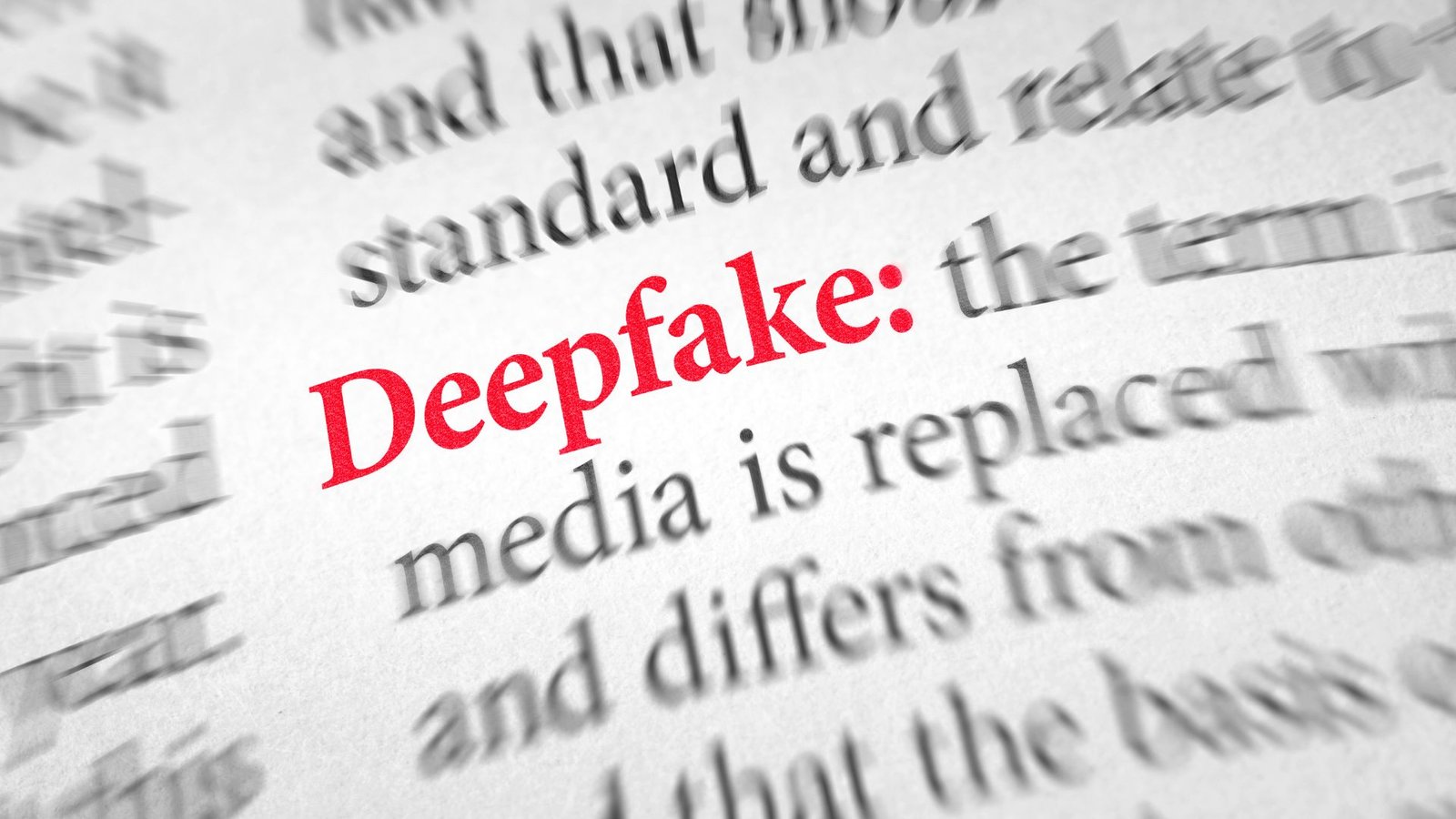On this page you will read detailed information about Regulating Deepfake and Generative AI in India.
Introduction
The rapid advancement of Artificial Intelligence (AI) has brought forth a concerning development known as deepfake technology. Deepfakes refer to digitally manipulated media, including videos, images, and audio, that are created using AI algorithms. These hyper-realistic fabrications blur the lines between reality and fiction, posing significant challenges in the realms of privacy invasion, misinformation, harassment, and political manipulation. India, like many other countries, is grappling with the detrimental effects of deepfakes and the urgent need for appropriate regulations to address this emerging threat.
Understanding Deepfake Technology
Deepfakes are generated by leveraging AI and machine learning algorithms to alter and manipulate media content. While AI-driven technologies such as deepfakes have beneficial applications in various fields, including education, film production, and criminal forensics, they also pose significant risks. The creation and dissemination of deepfakes have become increasingly accessible, enabling semi-skilled and unskilled individuals to morph audio-visual clips and images with ease. This accessibility has given rise to a slew of concerns surrounding the misuse of deepfakes, particularly in the context of political campaigns and online gendered violence.
The Impact of Deepfakes in India and Beyond
In recent years, India has witnessed several incidents that have exposed the dangers of deepfake technology. During the Delhi elections, AI-generated deepfake videos of political leaders were circulated on social media platforms, aiming to deceive and mislead voters. Similar incidents have been reported involving prominent figures like actor Rashmika Mandanna and influencer Zara Patel, whose likenesses were manipulated in deepfake videos. These instances not only highlight the potential for reputational damage but also underscore the urgent need to address the spread of misinformation and the violation of privacy rights.
India is not alone in facing the repercussions of deepfakes. Internationally, deepfakes have been used to influence political campaigns, as seen in Argentina’s presidential polls, where candidates were portrayed in misleading and distorted ways. The misuse of deepfakes has also taken a gendered toll, with a significant majority of deepfakes being pornographic in nature and targeting women. The psychological trauma inflicted on victims is compounded by the social stigma they endure. These alarming trends necessitate robust measures to combat the negative impact of deepfakes.
Existing Legal Provisions in India
While India currently lacks specific laws addressing deepfakes and AI-related crimes, various existing legal provisions can be invoked to tackle these issues. The Information Technology Act, 2000 (IT Act), offers recourse in cases of privacy violation and impersonation caused by deepfakes. Section 66E of the IT Act deals with the capture, publication, or transmission of a person’s images in mass media without their consent, carrying penalties of up to three years of imprisonment or a fine of ₹2 lakh. Additionally, Section 66D targets the malicious use of communication devices or computer resources for impersonation or cheating, punishable by imprisonment and/or a fine.
Sections 67, 67A, and 67B of the IT Act can be utilized to prosecute individuals involved in the publication or transmission of deepfakes that are obscene or contain sexually explicit acts. The IT Rules also mandate social media platforms to promptly remove artificially morphed images and content impersonating others. Failure to comply with these rules can result in the loss of safe harbor protection for the platforms. Furthermore, the Indian Penal Code includes provisions that can be applied to cybercrimes associated with deepfakes, such as insulting the modesty of a woman, criminal defamation, and spreading hate on communal lines.
In the previous post, we had shared information about Exploring E-Commerce Website and Their Legal Liabilities in India, so read that post also.
Challenges and Limitations of Existing Laws
Despite the availability of legal provisions, there are challenges and limitations in addressing the deepfake menace effectively. The current laws were not designed specifically to combat emerging technologies like deepfakes, and piecemeal amendments may not suffice. A comprehensive regulatory approach is required, one that takes into account emerging technologies and the potential harms they can inflict. To develop an effective regulatory framework, it is essential to conduct a market study that assesses the different types of harm caused by AI technology.
In addition to comprehensive legislation, a robust enforcement mechanism is crucial. Merely designing laws is insufficient; India must also build the institutional capacity to implement and enforce these laws effectively. It is essential to strike a balance between protecting against the misuse of deepfakes and fostering innovation. Regulatory frameworks should not stifle technological advancements or curtail freedom of speech. Additionally, there is a need for preventive measures and public awareness campaigns to educate individuals about the presence and dangers of deepfake content.
Global Best Practices: Learning from International Approaches
Several countries have taken steps to regulate deepfakes and mitigate their harmful effects. In the United States, President Joe Biden signed an executive order focusing on managing the risks associated with AI, including the development of labeling standards for AI-generated content. States like California and Texas have passed laws criminalizing the distribution of deepfake videos intended to influence election outcomes. China has implemented regulations that restrict the use of deep synthesis technology, ensuring explicit labeling and traceability of doctored content. The European Union has strengthened its Code of Practice on Disinformation, requiring social media giants to flag deepfake content or face substantial fines.
In the previous post, we had shared information about Analysis of the Draft Broadcasting Services (Regulation) Bill 2023, so read that post also.
The Indian Government’s Response
Recognizing the urgent need for regulation, the Indian government, led by the Ministry of Electronics and Information Technology, is taking proactive measures to combat the spread of deepfakes. Minister Ashwini Vaishnaw recently chaired a meeting with social media companies, industry bodies, and academics to discuss the issue. The consensus reached during the meeting was that deepfakes constitute a significant threat to society and require heavier regulation. As a result, the government has committed to drafting regulations within the next 10 days, with a particular focus on holding both creators and social media intermediaries accountable.
The proposed regulations aim to address the spread of deepfakes by imposing accountability measures and introducing labeling requirements. The government is considering monetary fines for non-compliance and exploring avenues for holding individuals creating deepfakes responsible for their actions. Reporting mechanisms will also be strengthened, enabling individuals to report deepfake content promptly. The government intends to work closely with social media companies to ensure proactive and timely action to combat the proliferation of deepfakes.
The Way Forward: Balancing Innovation and Safety
As India moves forward in regulating deepfakes and generative AI, it is essential to strike a balance between safety and innovation. AI governance should not impede technological advancements or hinder the thriving startup ecosystem. A comprehensive regulatory framework must be developed, taking into account the Indian context and the specific challenges posed by deepfakes. This framework should be based on thorough market research and include provisions for enforcement and implementation.
In addition to legislation, preventive measures such as public awareness campaigns and education programs are crucial in combating the deepfake threat. Regulatory sandboxes, similar to those used in the financial sector, could be employed to facilitate innovation while ensuring compliance with regulations. It is imperative to strengthen reporting mechanisms and ensure timely action by social media platforms to prevent the rapid spread of deepfakes.
Conclusion
Deepfake technology poses significant challenges in the realms of privacy, misinformation, and political manipulation. India, along with the international community, is grappling with the harmful effects of deepfakes and the urgent need for effective regulations. While existing legal provisions offer some recourse, comprehensive legislation tailored to emerging technologies like deepfakes is necessary. By learning from global best practices and striking a balance between innovation and safety, India can combat the spread of deepfakes, protect its citizens, and safeguard its democratic institutions.
Disclaimer
The information and services on this website are not intended to and shall not be used as legal advice. You should consult a Legal Professional for any legal or solicited advice. While we have good faith and our own independent research to every information listed on the website and do our best to ensure that the data provided is accurate. However, we do not guarantee the information provided is accurate and make no representation or warranty of any kind, express or implied, regarding the accuracy, adequacy, validity, reliability, availability, or completeness of any information on the Site. UNDER NO CIRCUMSTANCES SHALL WE HAVE ANY LIABILITY TO YOU FOR ANY LOSS OR DAMAGE OF ANY KIND INCURRED AS A RESULT OR RELIANCE ON ANY INFORMATION PROVIDED ON THE SITE. YOUR USE OF THE SITE AND YOUR RELIANCE ON ANY INFORMATION ON THE SITE IS SOLELY AT YOUR OWN RISK. Comments on this website are the sole responsibility of their writers so the accuracy, completeness, veracity, honesty, factuality and politeness of comments are not guaranteed.
So friends, today we talked about Regulating Deepfake and Generative AI in India, hope you liked our post.
If you liked the information about Regulating Deepfake and Generative AI in India, then definitely share this article with your friends.
Knowing about laws can make you feel super smart ! If you find value in the content you may consider joining our not for profit Legal Community ! You can ask unlimited questions on WhatsApp and get answers. You can DM or send your name & number to 8208309918 on WhatsApp








